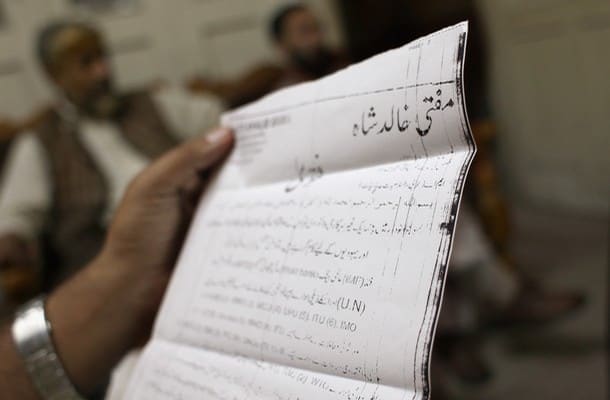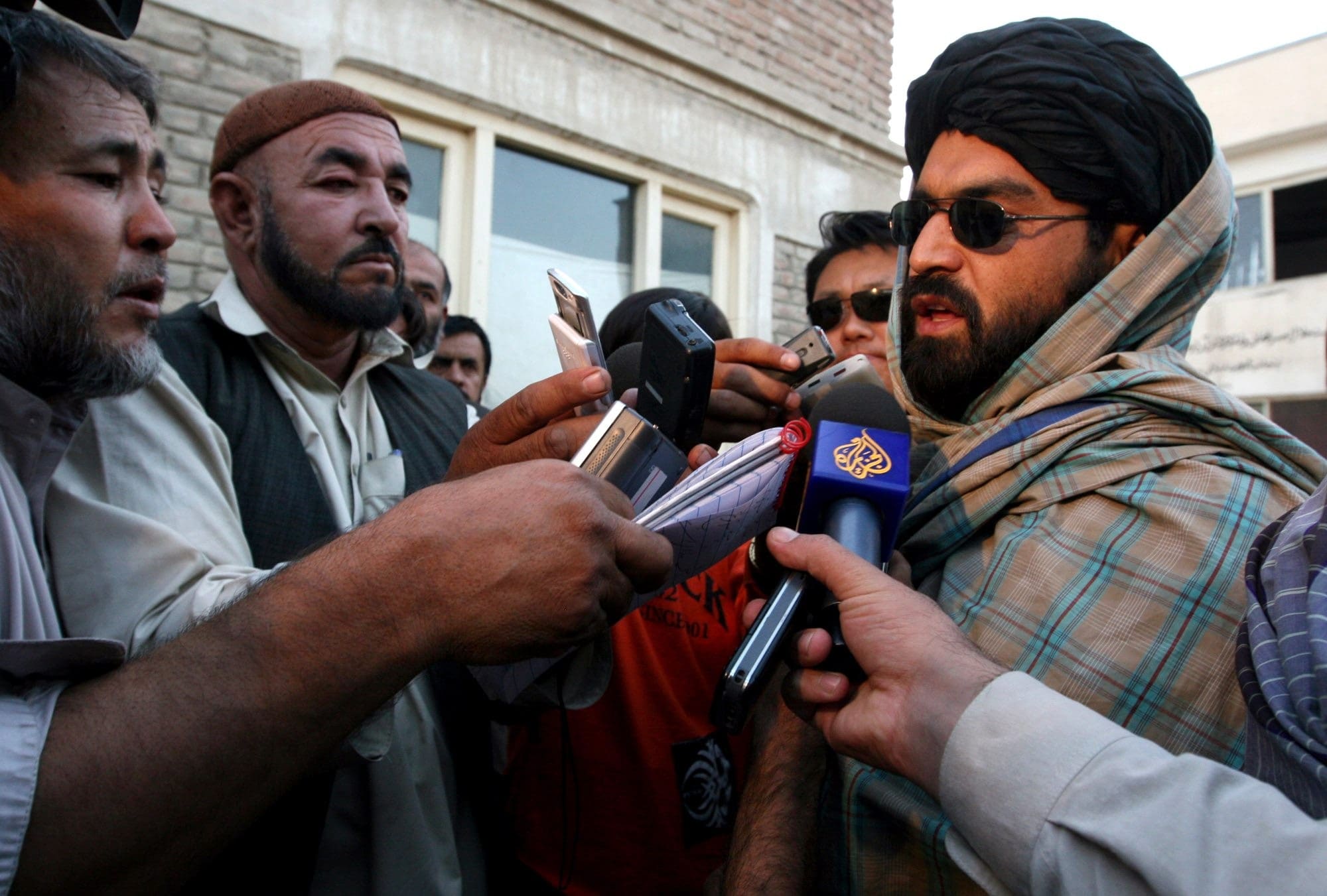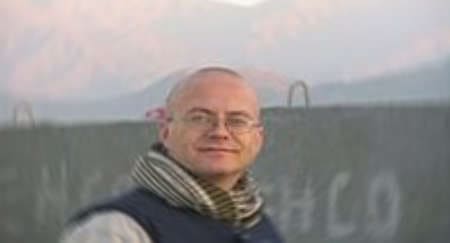Tim Foxley argues that too little time, effort and analytical resources are dedicated to understanding what the Taliban are saying - and that a change in this approach could lead to a change in the war
I apologise for bluntly jumping straight to the point of this article, but I want to ask what is being done to take the ‘media’ battle to the Taliban?
By this, I mean proactive campaigns that confront and expose the Taliban’s statements, their vulnerabilities and their contradictions - and not just the stream of ‘good news’ stories broadcast to the Afghans and the international community.
I believe there is too little time, effort and analytical resource directed at understanding what the Taliban are saying, how they are saying it and why they might be saying it. And too few reports of the calibre of the one by the International Crisis Group, which looked into Taliban propaganda. As a result there is little understanding or even any apparent interest in looking at measures that might counter Taliban media activities.

A Taliban night letter: these threatening letters, designed to spread fear, are an effective communication tool among the local Afghan population
While NATO is investing effort in strategic communications, spreading ‘good news stories’ and information across Afghanistan is only one part of the media battle front. My contention is that the Taliban are actually quite vulnerable in this arena and a proactive effort against them could prove fruitful.
Communicating is not a question so much of sophistication but effectiveness
In the physical, or ‘kinetic’ battle against the Taliban, analysts like to point out that it is not that the Taliban are strong, but that they usually the only ones actually occupying the ground at the district level. I suggest that this view holds true when thinking about the media arena.
The Taliban are good, or ‘effective’, at the local level, when they are communicating in simplistic ways to their Pashtun community – on both sides of the border. Here, it is the commonly held tribal values and language which gives them a great advantage over what I feel is a fairly ‘clunky’ Western approach. The Taliban are good at reflecting local concerns - whether it is fear of poppy eradication and loss of livelihood, violation of honour by infidels or collateral damage to people and property.
While the Taliban’s media activities are not particularly sophisticated (I feel NATO/ISAF has tended to use Taliban media ‘sophistication’ as an excuse for their own ineffectiveness), in many ways we need to be careful about this part of the debate. Firstly, because it is not a question so much of sophistication - but effectiveness. And there doesn't seem to be much evidence of analysis of Taliban media effectiveness. Secondly, for the main audiences to whom the Taliban are communicating, they really do not have to be that sophisticated.
Who is winning the media battle: NATO or the Taliban?
In the media arena, NATO should have the advantage – it has the money, resources, brainpower. But it is handicapped because:
- Its deliberations, dilemmas and concerns are very painfully public
- A lot of its media effort seems to be spent just keeping its own team ‘on message’
- It has a wider, more sophisticated, demanding and sceptical audience in its domestic capitals
On top of these difficulties, the international media frequently and unintentionally make propaganda ‘gifts’ to the Taliban. For example, the persistent use of the term ‘Spring Offensive’ has gone so long unchallenged that the Taliban now use the term themselves. And if you ask a Taliban spokesman ‘did you launch an attack on Bagram airbase because you knew the US Secretary of State for Defence was there?’ the answer is hardly going to be ‘No’.

Playing the media game: the Taliban know that speed, not accuracy of information, is one way to gain an advantage in the media © Reporters / Associated Press
The Taliban also have speed of response on their side – instantly claiming responsibility for any incident that suits their purpose. Their website and internet claims are highly inflated lists of bodycount and, bizarrely, ‘tank count’.
At the strategic level, I believe NATO still has the advantage, because the Taliban’s efforts on wider political issues are confused, naïve and lacking in credibility. For example, last year the Taliban suggested that it wasn’t them who was destroying schools - and that they did in fact have an education policy! However, they appear very uncomfortable when talking about other policies beyond killing infidels – basically because they have little depth of thought beyond this. Their statements have an almost total lack of discussion of the subjects that most Afghans want to hear about – reconstruction, employment, development.
But whether you are swayed by this argument or not, the Taliban are getting slowly better at the strategic message, something I have noted since I first plunged into this subject at the end of 2006. And attacks such as against the Serena hotel or President Karzai this year probably point the way ahead for the Taliban’s activities, in terms of coordinating operations with strategic media messages.
I saw an incident myself in Faryab province which demonstrated how the Taliban disregard Pashtun values when it suits them
If you know what your opposition’s vulnerabilities are, you are halfway towards being able to exploit them. A look at Taliban statements reveals a lot about their concerns. They appear very sensitive on the following subjects:
- threats or challenges to their credibility and credentials – whether Pashtun, Afghan, jihadi or Islamic
- casualties they might have suffered
- civilian (Afghan) casualties that they might have caused through their attacks
- reports of divisions within the Taliban
- contradictions in their statements
There are many opportunities to exploit these weaknesses. In July, when I was in Afghanistan, I came across one myself.
I was in Faryab province, part of Afghanistan usually described as ‘relatively benign’. A minor security incident was developing. On the Badghis/Faryab province border area, a self-styled Taliban ‘shadow governor’ and a small group of fighters entered a village attempting to abduct local NGO (non-governmental organisation) workers who had been constructing a well for the village. The village elder, following the Pashtun code of protecting guests, defended the NGO team and ended up shooting the Taliban leader, sending the rest of the Talebs fleeing.
With careful working, these sorts of situations could be used to demonstrate, for example, how the Taliban disregard Pashtun values when it suits them and how they are clearly not achieving the popular jihad they are hoping for.
A selection of other opportunities offered in the past include:
- In 2005, Mullah Omar was stripped of the title ‘Leader of the Faithful’ by the same shura that appointed him in 1996.
- In March 2006, the Egyptian Grand Mufti ruled suicide bombing illegal. At least one Afghan newspaper editorial picked this up and bemoaned the fact that this story was not being promoted across the country.
- In November 2006 an article by Ahmed Rashid quoted Pashtun tribes from the North West Frontier Provinces (NWFP) as saying: ‘The Taliban are drowning our values in a sea of blood’.
- In April 2007, a NWFP shura also ruled on the illegality of suicide bombing.
Examples of contradictions are numerous. Two will suffice here:
- The un-Islamic nature of kidnapping women (such as with the South Korean hostages).
- Claiming suicide attacks, only to retract when the number of Afghan civilians killed becomes apparent (such as Spin Boldak in January 2006). This prompted the unintentionally ironic claim from the now deceased Mullah Dadullah: ‘Our operations do not kill civilians’.
Challenging the Taliban in the media will not provide a ‘magic wand’ whereby the Taliban disintegrate due to their own contradictions
Anthony Cordesman’s work at the CSIS (Center for Strategic and International Studies) should be commended for reminding us, not only of the need to review the ways in which we measure and analyse military and political developments in Afghanistan, but also that this is an Afghan and Pakistani regional problem. A media campaign with a very strong Afghan/Pakistani/Pashtun face, engaging on both sides of the border, needs to challenge the Taliban to justify what they are doing - and why.
The Afghan and Pakistani governments - with the help of the international community - could do much to regain the media initiative by widening the debate, engaging with their respective media and taking the Taliban out of their comfort zone and into politics, economics, ethnic/women's/human rights, education and reconstruction.
But before this can be done, much more analysis and understanding of just what, how and why the Taliban says things is necessary – and not just analysis from the usual white, middle-class westerners. Expertise abounds in Afghan, Pakistani and Pashtun circles.
What can be done and who shall do the work?
I am under no illusion that challenging the Taliban in the media environment will provide a ‘magic wand’, whereby the Taliban disintegrate under the weight of their own contradictions. The real progress against the Taliban will be determined by whether the Afghan government and the international community manage to achieve real reform and reconstruction on the ground – specifically the permanent presence of a competent, well-equipped and trustworthy police force - and whether fragile reforms produce strong enough roots to keep the country together over the next few decades.
However, proactive rather than reactive has to be the best policy.
The international community, the international media, the Afghan and Pakistani governments and NATO/ISAF could do much to reduce Taliban support and encourage ‘waverers’ by aggressively exposing and challenging Taliban contradictions and vulnerabilities. Taliban willingness to destroy people, property and infrastructure and their absence of political and economic content provides fertile media high ground to occupy and exploit.

